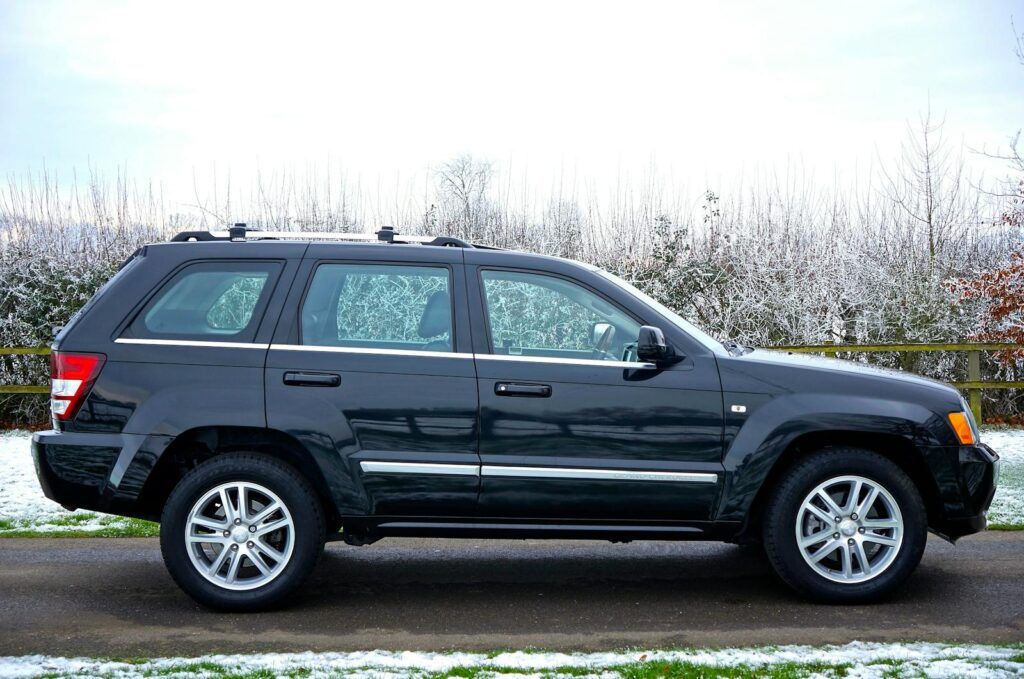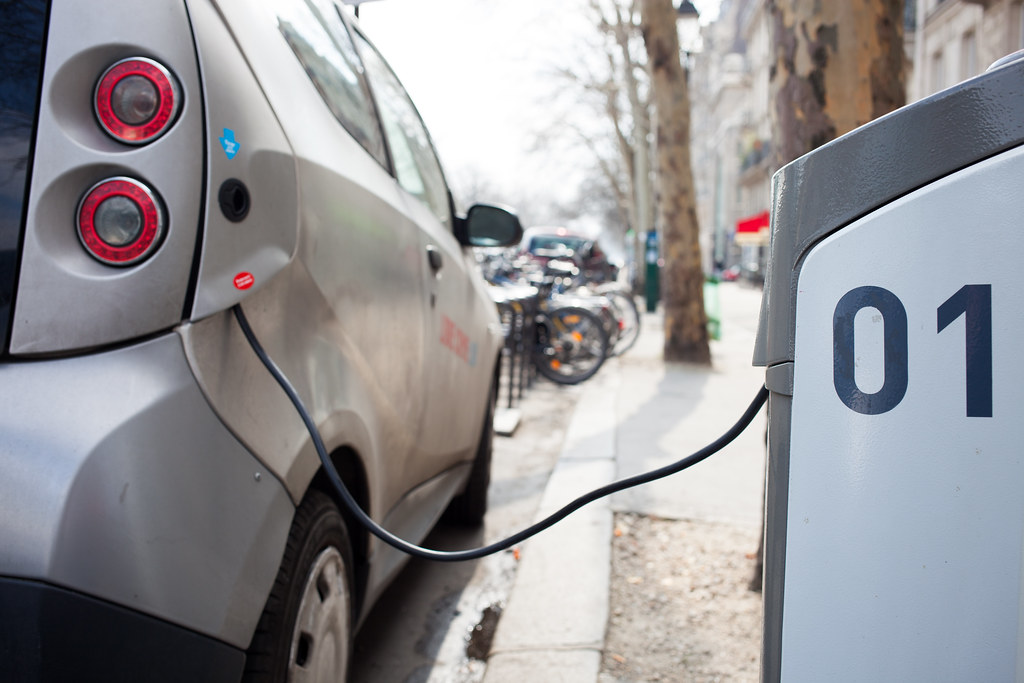Picture this for a moment, you’re in the car, tootling along, minding your own business – keeping a safe distance between you and the vehicle in front. All of a sudden some maniac in a loud vehicle comes along and neatly zips in front of you: “Bastard. Ignorant, selfish, bad mannered bastard”. Your outburst may well be more sophisticated, but the point is, some behaviors can truly offend. This immediate, visceral reaction isn’t just about driving; it’s often about the driver, and quite frequently, the badge on their grille. We’ve all done it, silently (or not so silently) assigning labels to the person behind the wheel based on their choice of ride.
It turns out, what you drive can indeed say a lot about who you are, or at least, what a whole lot of people *think* you are. Certain types of vehicles have become inextricably linked with specific lifestyles, personality types, and even perceived social standings. From the playful jabs at “minivans and soccer moms” to the more pointed observations about “Jeeps and outdoor-lovers” or “electric cars and environmentalists,” narratives are created and circulated. These simple shortcuts in our minds are more than just fleeting observations; over time and through repetition, these stereotypes become highly meaningful and often end up seeming normal, accepted, and part of conventional wisdom.
While many of these car-driver stereotypes are often delivered with a wink and a nudge, serving as quick, entertaining reads in listicle formats, a closer look reveals layers of societal assumptions. Sometimes they’re humorous, sometimes they’re cutting, and occasionally, as research has shown, they can be deeply problematic, feeding into prejudices. We’re about to embark on an entertaining yet insightful journey, peeling back the layers of perception surrounding 13 popular vehicles and their drivers. We’ll start by examining those cars often associated with ambition, status, and a certain kind of ‘performance’ on and off the road.
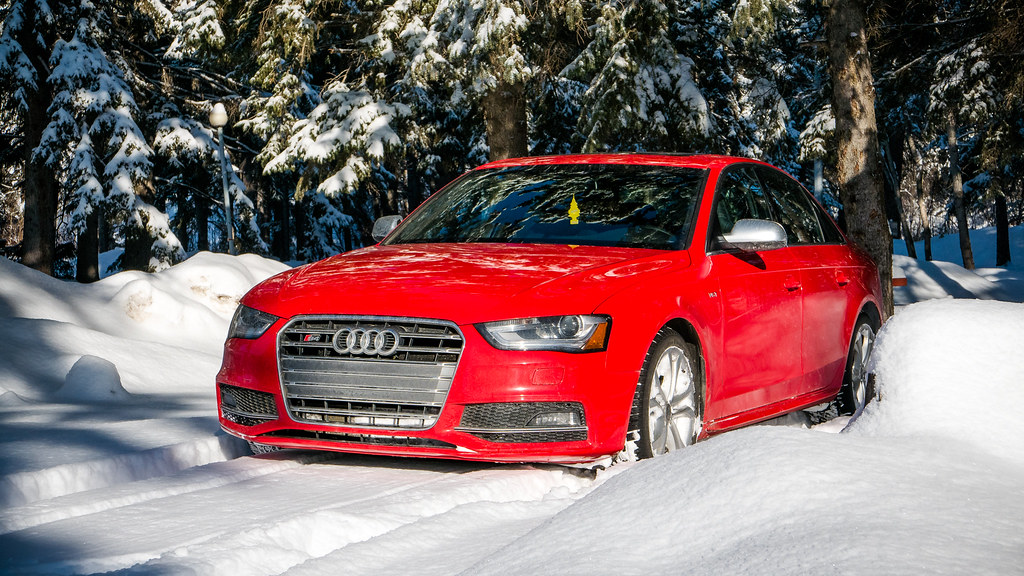
1. Audi
No doubt, Audi has made a steep ascent in recent years, shedding its old image to become a symbol of modern success. It was a long way to go from the image of a boring, lame jalopy driven by seniors to a fancy sedan which is even driven by the German Chancellor. This shift has firmly established the brand as a car for climbers, a choice for those on the upward trajectory in life.
The Audi driver is often described in fascinatingly contradictory ways, showcasing the complexity of these stereotypes. Some surveys suggest they are perceived as “more playful than Mercedes and BMW drivers” and even seen as “less determined and less arrogant,” surprisingly possessing “more appeal than a Mercedes driver.” However, other accounts paint a starkly different, and perhaps more widely held, picture: “Audi drivers are the WORST drivers on the road. Fact.” They’re frequently associated with “severe road rage if someone dares to drive one mile below the speed limit (it’s proven!).”
This aggressive driving style isn’t just about speed; it’s a personality statement. These drivers likely “work in sales, and use the phrase “crushed it” multiple times a day.” Their leisure time is just as high-octane, as they spend their holidays “living it up,” reclaiming their youth in vibrant destinations like Ibiza and Ayia Napa, with weekends often spent in a VIP booth at the *fanciest* club in town. This blend of aspirational success, impatience, and an assertive driving style makes the Audi stereotype particularly vibrant and easily recognizable.
Read more about: Unbelievably Vanished? A Deep Dive into 14 Iconic Daytime Talk Show & News Anchors Who Left the Airwaves
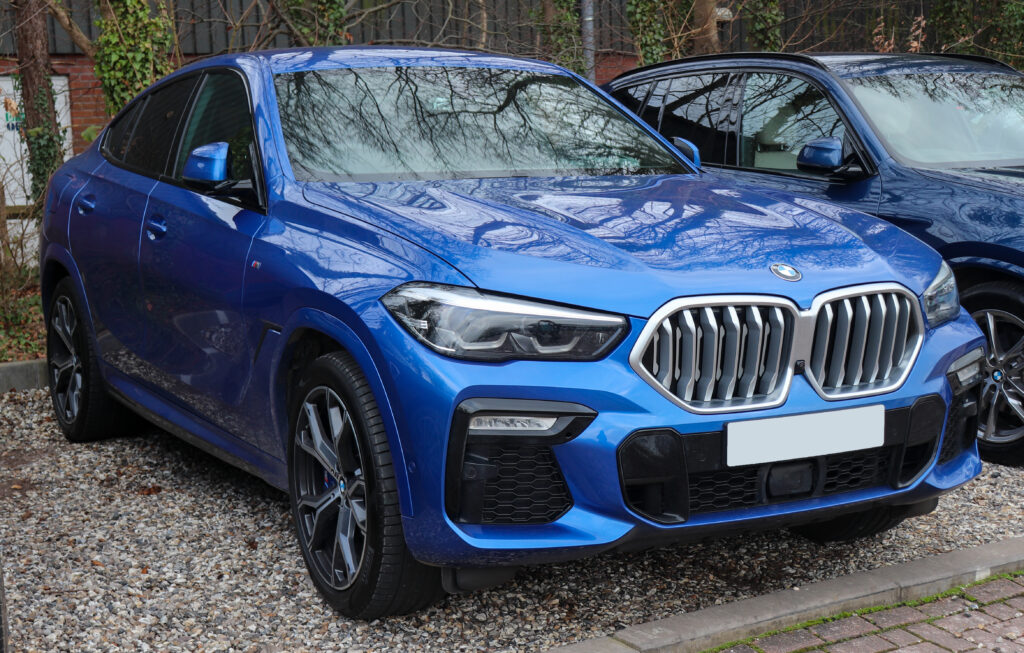
2. BMW
Ah, the BMW driver! This stereotype almost writes itself, steeped in years of cultural anecdotes and observations. The brand’s long-standing slogan, “Sheer Driving Pleasure,” has, for many, translated into a driver who prioritizes their own experience above all else. In the minds of a significant portion of the population, BMW drivers are nothing short of “potential speeders,” with the context even noting that “only the Porsche pilot goes wilder.” They are also often considered “similar athletic and arrogant,” though perhaps “not yet as professionally successful as the Porsche driver,” suggesting they are still very much on the climb.
One of the most ubiquitous stereotypes associated with BMW drivers, a narrative often shared with a sigh and an eye-roll, is their apparent disdain for turn signals. It’s a running joke that has permeated driving culture: “If you ever feel like your life has no purpose, remember that there are teams of people in Germany who are tasked with installing blinker systems on these cars.” This perception isn’t just about a forgotten flick of the wrist; it speaks to a deeper belief that “everyone else on the road should instinctively know where you’re going,” reflecting a strong sense of entitlement, self-importance, and perhaps a touch of impatience on the asphalt.
Beyond the driving habits, the BMW driver carries a distinct social identity. They are often caricatured as “snooty rich boys who think they’re James Bond but cry when they chip their nail polish,” frequently observed “cutting you off while checking stock prices.” When it comes to their professional life, they might describe themselves as a “businessman,” but when pressed for details, they “will refuse to divulge what that business is.” Furthermore, they love to describe themselves as a “leader” and “really can’t deal with losing,” solidifying an image of competitive, assertive, and sometimes deliberately mysterious individuals who are always striving for the top, in traffic and in life.
Read more about: The Curated Canvas: Inside Ralph Lauren’s Exclusive Garage of Vintage Race Cars and Modern Exotic Hypercars
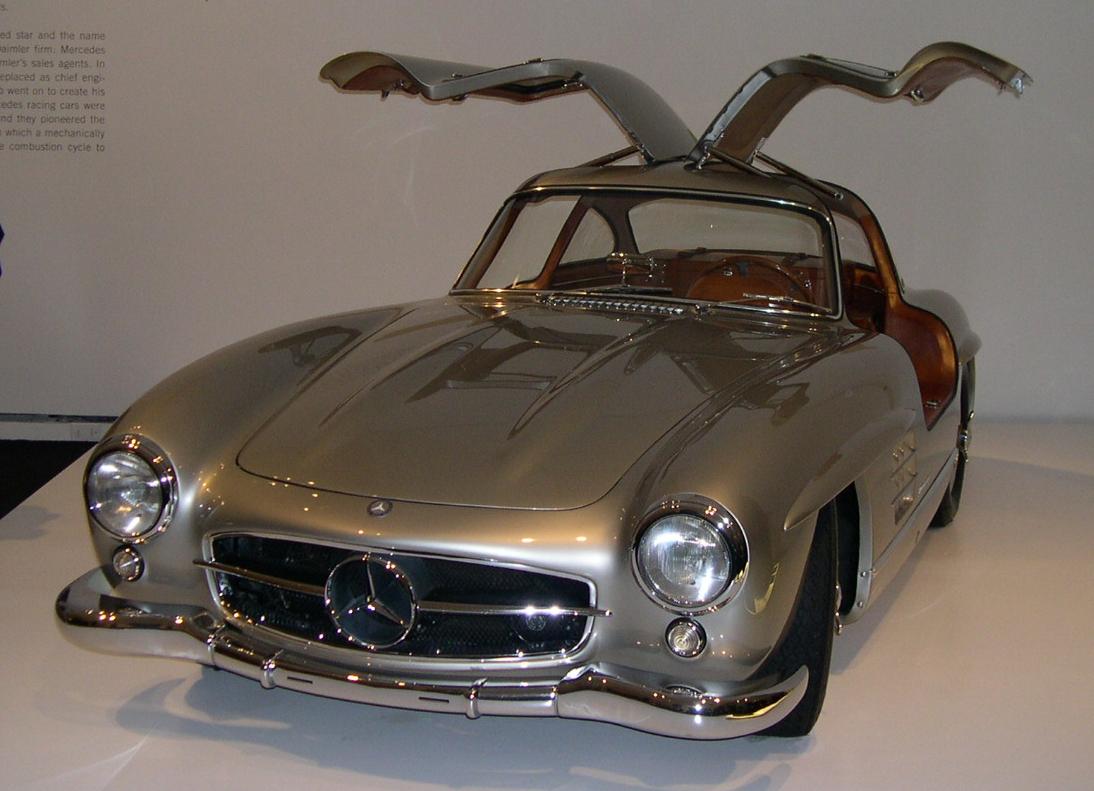
3. Mercedes-Benz
Stepping into a Mercedes-Benz often conjures a very different image than its sportier German counterparts. This brand is less about aggressive ascent and more about established, perhaps even inherited, status. The typical Mercedes driver is frequently envisioned as an “old-money geezer or their trophy wives,” individuals who “drive like they own the road and tip like they’re allergic to cash.” This instantly places them in a distinct social stratum, hinting at a comfortable, settled affluence rather than a fierce pursuit of it.
Surveys shed further light on the perceived personality traits of those behind the three-pointed star. The Mercedes driver, it seems, “has three typical characteristics: he is much more serious than all the other drivers, older (over fifty), and has the reputation of a petty bourgeois.” They are often seen as “a settled self-employed, who is rather arrogant and conservative, unathletic and rather fat.” This paints a picture of a driver who is supremely comfortable in their established position, perhaps a little staid, and less concerned with youthful vitality or outward displays of athleticism.
Their driving style, much like their social presence, tends to exude a sense of ownership over the road. This perceived entitlement, where their status translates into driving habits that suggest they “own the road,” can often lead to friction with other drivers. Whether it’s their slow, deliberate movements or an air of haughtiness, these actions are sometimes seen as inconsiderate. The emphasis on “petty bourgeois” and “conservative” traits further distinguishes them as maintaining a traditional, perhaps even rigid, social outlook, quite content in their unhurried journey through life.
Read more about: The Curated Canvas: Inside Ralph Lauren’s Exclusive Garage of Vintage Race Cars and Modern Exotic Hypercars
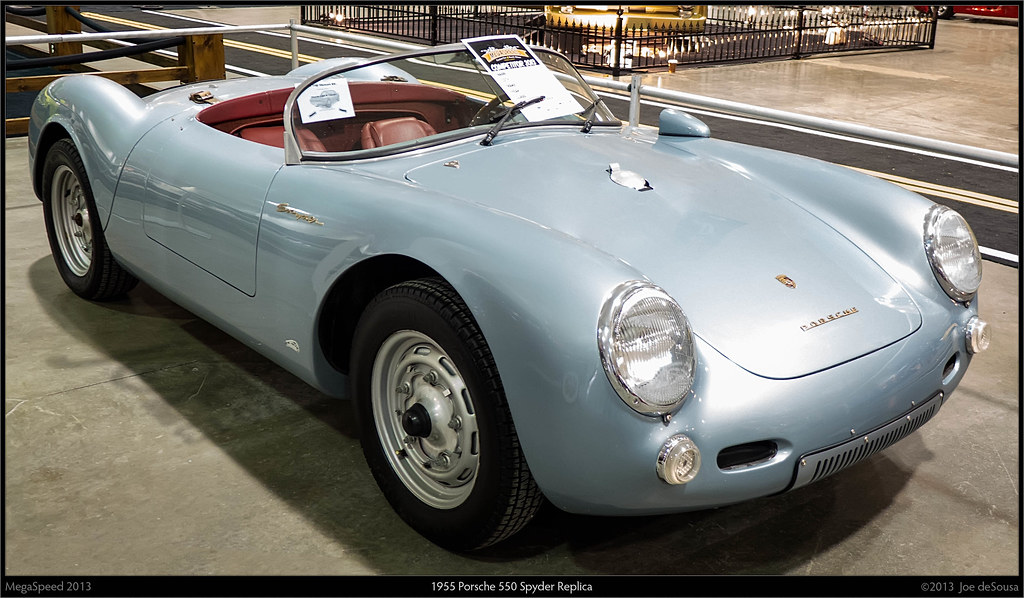
4. Porsche
If there’s one car stereotype that brings an immediate, almost universal chuckle, it’s the Porsche driver. This image is so deeply ingrained in our collective consciousness that it almost feels like an unwritten rule of the road. Porsche drivers are overwhelmingly caricatured as “middle-aged dentists having a midlife crisis.” There’s a distinct visual of them “revving their 911 like it’s gonna make their staff forget their bald spot,” which immediately adds a touch of humorous, perhaps even slightly pitying, irony to the luxury sports car.
Beyond the dental chair, the Porsche pilot is often seen as the peak of performance driving, even surpassing the BMW driver in perceived aggression. The context notes that “only the Porsche pilot goes wilder” than a BMW driver, indicating a significant inclination towards high-performance driving and pushing limits. This individual is also consistently considered “professionally successful” beyond the BMW driver, suggesting that while other luxury car owners might be on the rise, the Porsche owner has truly “made it” – even if their choice of vehicle has become a well-worn trope.
The connection between Porsche ownership and the dental profession is so potent that the context playfully challenges the reader: “Don’t believe us? Go drive by your dentist’s office and check the parking lot.” This isn’t just a suggestion; it’s a confident nod to the pervasive nature of this particular stereotype, making it almost an inside joke among those who observe car culture. It’s a classic, enduring example of a specific, high-earning profession being humorously, yet firmly, linked to a premium car brand, perhaps because of the perceived stable, lucrative, and perhaps occasionally stressful, nature of the career.
Car Model Information: 2021 Porsche 911
Name: Porsche 911
Caption: The 1 millionth 911 produced on display at Volkswagen Group Forum, Berlin
Designer: Ferdinand Alexander Porsche
Manufacturer: Porsche
Production: September 1964 – present
Assembly: Stuttgart,Baden-Württemberg
Class: Sports car
BodyStyle: unbulleted list
Related: unbulleted list
Layout: Rear-engine design,rear-wheel drive
Predecessor: Porsche 356
Categories: 1970s cars, 1980s cars, 1990s cars, 2+2 coupés, 2000s cars
Summary: The Porsche 911 model series (pronounced Nine Eleven or in German: Neunhundertelf, or colloquially Neunelfer) is a family of two-door, high performance rear-engine sports cars, introduced in September 1964 by Porsche of Stuttgart, Germany, and now in its eighth generation. All 911s have a rear-mounted flat-six engine, and usually 2+2 seating, except for special 2-seater variants. Originally, 911s had air-cooled engines, and torsion bar suspension, but the 911 has been continuously enhanced, and evolved across generations. Though the 911 core concept has remained largely unchanged, water-cooled engines were introduced with the 996 series in 1998, and front and rear suspension have been replaced by Porsche-specific MacPherson suspension up front, and independent multi-link rear suspension.
The 911 has been raced extensively by private and factory teams, in a variety of classes. It is among the most successful competition cars. In the mid-1970s, the naturally aspirated 911 Carrera RSR won world championship races including Targa Florio and the 24 Hours of Daytona. The 911-derived 935 turbo also won the 24 Hours of Le Mans in 1979. Porsche won the World Championship for Makes in 1976, 1977, 1978, and 1979 with 911-derived models.
In a 1999 poll to determine the Car of the Century, the 911 ranked fifth — one of two in the top five that had remained continuously in production (the original Beetle remained in production until 2003). The one millionth example was manufactured in May 2017 and is in the company’s permanent collection.
Get more information about: Porsche 911
Buying a high-performing used car >>>
Brand: Porsche Model: 911
Price: $126,995 Mileage: 8,629 mi.
Read more about: The Curated Canvas: Inside Ralph Lauren’s Exclusive Garage of Vintage Race Cars and Modern Exotic Hypercars
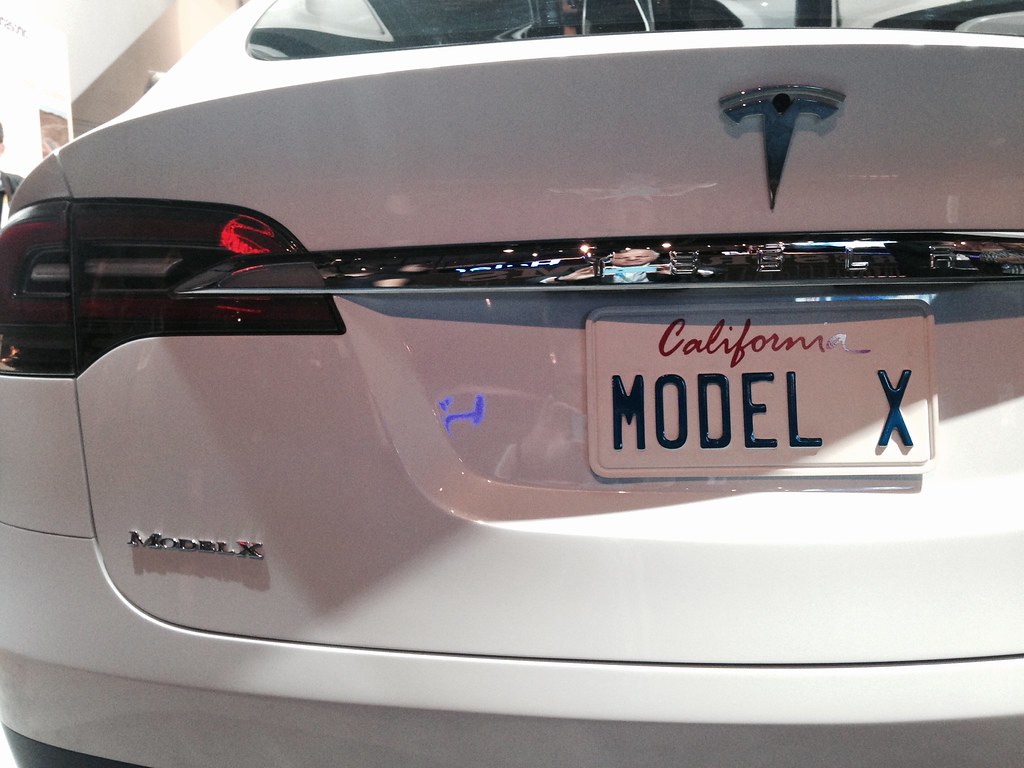
5. Tesla
Welcome to the future, or at least, the stereotype of those who are driving it! The Tesla driver is a distinctly modern phenomenon, embodying a blend of tech enthusiasm, environmental aspirations, and a certain kind of digital-age swagger. They are frequently characterized as “Tech-bro hippies or crypto dweebs who think they’re saving the planet while sipping kombucha.” And in a wonderfully current observation, their “Model 3’s are on autopilot, but they’re still sliding into your DMs with NFT pitches.” This perfectly captures a very contemporary, specific demographic that seamlessly blends Silicon Valley and social media.
Unsurprisingly, an integral part of the Tesla stereotype is the perception of significant wealth. These individuals are believed to possess “an extortionate amount of money,” and crucially, they believe they’ve “earnt it.” However, their motivation for splurging on a “statement car” isn’t solely about traditional luxury; it’s primarily “because they actually care about the technology inside of it.” This highlights a driver motivated by innovation, cutting-edge gadgets, and status gained through embracing advanced tech, rather than simply displaying conventional affluence.
Despite their forward-thinking car choice, Tesla drivers are also acutely aware of how they might be perceived by others. They are “fully aware that people may label you as ‘slightly dull,’ but you don’t care, because you’ve finally found the perfect car that reflects you and your love of tech and gadgets.” And for many in this demographic, the brand’s often controversial figurehead is nothing short of an icon: “And that Elon Musk? What an icon.” This stereotype perfectly encapsulates the early adopter, environmentally-conscious, yet also somewhat self-important tech enthusiast who admires the brand’s larger-than-life creator and the innovative spirit of his creations.
Car Model Information: 2023 Genesis GV80 2.5T
Name: Tesla Model 3
Manufacturer: Tesla, Inc.
Production: 2017–present
Assembly: unbulleted list
Designer: Franz von Holzhausen
Class: Mid-size car
BodyStyle: Sedan (car)
Layout: unbulleted list
Related: Tesla Model Y
Motor: unbulleted list
Transmission: Single-speed fixed (9:1 ratio)
Battery: unbulleted list
ElectricRange: unbulleted list
Charging: unbulleted list
Wheelbase: cvt
Length: unbulleted list
Width: cvt
Height: unbulleted list
Weight: cvt
Caption: 2019 Tesla Model 3 Performance
Categories: 2020s cars, ANCAP large family cars, All-wheel-drive vehicles, All Wikipedia articles in need of updating, All Wikipedia articles written in American English
Summary: The Tesla Model 3 is a battery electric powered mid-size sedan with a fastback body style built by Tesla, Inc., introduced in 2017. The vehicle is marketed as being more affordable to more people than previous models made by Tesla. The Model 3 was the world’s top-selling plug-in electric car for three years, from 2018 to 2020, before the Tesla Model Y, a crossover SUV based on the Model 3 chassis, took the top spot. In June 2021, the Model 3 became the first electric car to pass global sales of 1 million.
A facelifted Model 3 with revamped interior and exterior styling was introduced in late 2023 for countries supplied by Gigafactory Shanghai and in early 2024 in North America and other countries supplied by the Tesla Fremont Factory.
Get more information about: Tesla Model 3
Buying a high-performing used car >>>
Brand: Tesla Model: Model 3
Price: $38,452 Mileage: 37,710 mi.
Read more about: Unearthing Automotive Gold: 14 Surprise Gems That Blew Away All Expectations

6. Volvo
The Volvo driver is the reassuringly solid, dependable presence on our roads, a stark contrast to some of the more aggressive stereotypes we’ve explored. These drivers are consistently portrayed as the epitome of safety, reliability, and thoughtful caution. They are often envisioned as “Swedish engineers or college professors with elbow patches” who “drive like they’re solving world peace and — warning — they brake for squirrels.” This instantly evokes an image of intellectual, conscientious, and perhaps a touch eccentric, individuals.
When it comes to personality and driving habits, the Volvo stereotype is remarkably consistent and overwhelmingly positive. “Well, aren’t you just a safe pair of hands? Dependable, reliable and loyal, you may be prone to always driving a few miles under the speed limit.” This emphasis on caution sometimes puts them at odds with more impatient or aggressive drivers, but the Volvo owner remains entirely unperturbed, knowing instinctively “that it’s ALWAYS better to be safe than sorry.” Their measured driving is a clear reflection of their steady, considered approach to life.
The Volvo driver is also often seen as occupying a particular social role, frequently characterized as “the mum of the friendship group.” This individual is always prepared, someone who “constantly carry around all the things you might ever need, because you take safety seriously.” While they might be perceived as a bit “old-fashioned” and could even still be carrying “Thomas Guides,” one thing is certain: they will “get wherever they’re going, and get there safely.” This stereotype, above all, celebrates conscientiousness, responsibility, and a fundamentally good-hearted approach to navigating both the roads and life itself.
Read more about: Remember These? 13 Rides That Went From Sought-After to Stale.
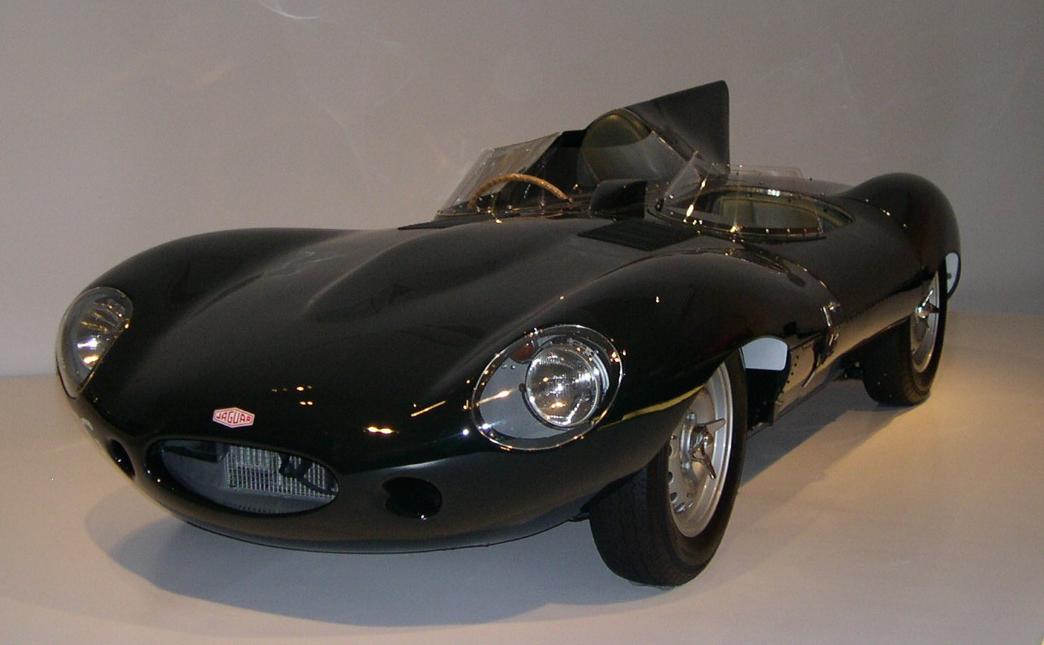
7. Jaguar
The Jaguar driver stereotype is a fascinating blend of aspirational elegance, perceived sophistication, and a dose of British self-awareness – often tinged with a humorous acknowledgement of practical realities. These drivers are frequently seen as “British expats or guys pretending they’re British. They’ve got a tweed cap, a superiority complex, and a car that breaks down on a schedule.” This immediately suggests a blend of perceived elegance and snobbery, coupled with the frustrating reality of classic luxury car ownership, where style might trump reliability.
For many Jaguar owners, particularly those who are “most likely retired,” their “car is their pride and joy, and you care for it as if it were your child.” They are meticulously attentive, never dreaming of missing “an annual service, and regularly top up your screen wash, for fear you may one day run out.” When they’re not cruising in their beloved Jag, they are “often found playing a spot of golf or bowls, or stood in a car park locked in deep conversation with a fellow Jag owner, as you passionately discuss how superior they are.” This highlights a strong community and a shared, almost reverential, appreciation for their chosen vehicle.
However, beneath the polished exterior and the tales of superior engineering, there’s an underlying critique that adds a layer of irony to the stereotype. The context playfully suggests that “Jaguar owners don’t do research before buying products. Sure, the commercials are cool and all…but what are you really getting for that much coin, other than future electrical headaches followed a possible four recalls?” This observation suggests that while these owners project an image of discerning taste and effortless class, they might sometimes overlook practicalities for the sheer prestige and a romanticized connection to a brand steeped in heritage. It’s a delightful blend of admiration and a gentle jab at the realities of luxury ownership.
Alright, buckle up because if you thought the first batch of car stereotypes was revealing, we’re just getting started! Now that we’ve explored the high-octane world of luxury and performance vehicles, it’s time to shift gears and delve into cars that speak volumes about lifestyle, identity, and maybe even your brunch preferences. These aren’t just cars; they’re rolling billboards for your personal brand, whether you realize it or not.
Read more about: The Curated Canvas: Inside Ralph Lauren’s Exclusive Garage of Vintage Race Cars and Modern Exotic Hypercars
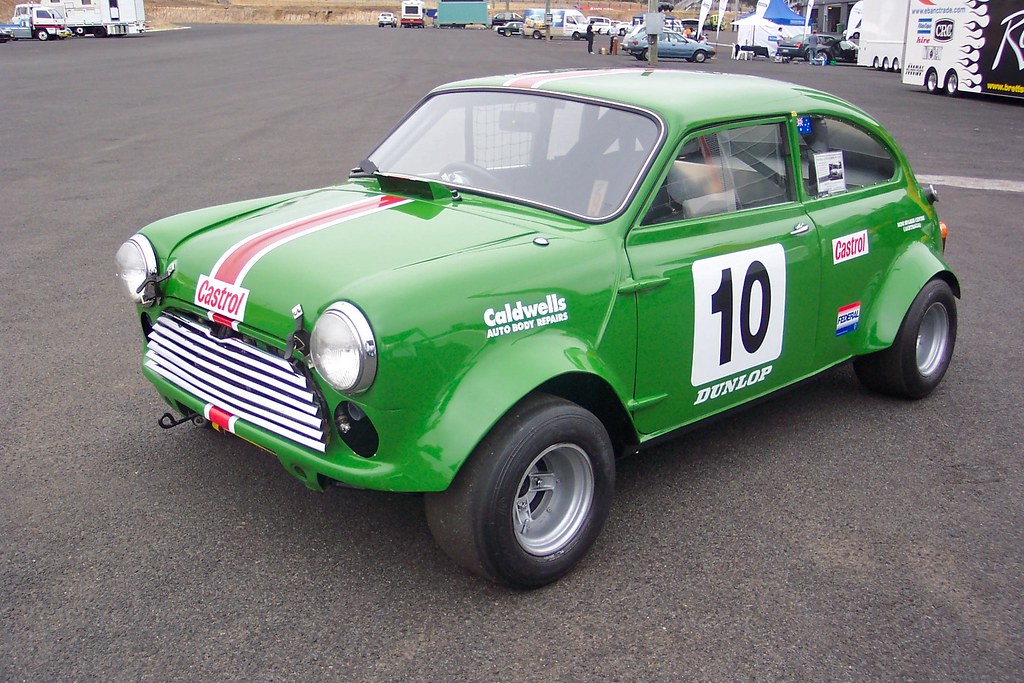
8. Mini Cooper
If the Fiat 500 is the cute, bubbly influencer of the car world, then the Mini Cooper is its slightly more sophisticated, perhaps vegan, older sister. Our research suggests that Mini drivers are often seen as “basically just a Fiat 500 girl but with more money (or access to daddy’s bank account).” It’s the go-to for the young and trendy, particularly students under 30 who might need a little help from a “sponsor – Mum, Dad, husband – to help her financing the zippy car.”
Indeed, the Mini has cemented its reputation as a quintessential “women’s car,” boasting “more female followers” than almost any other brand. It’s a statement piece, signaling a certain cosmopolitan flair and youthful energy. This isn’t just a car; it’s an accessory to a carefully curated lifestyle, embodying a blend of European charm and modern chic.
Beyond the aesthetics, the Mini driver is painted with a very specific, and highly relatable, lifestyle brush. You’re “probably a vegan (or at least you say you are, because you lasted a whole week during Veganuary).” And let’s be honest, you “love nothing more than a bottomless brunch – although a spin class comes a close second!” It’s a world where self-care, social events, and conscious living intersect.
Professionally, the Mini driver often finds themselves in dynamic fields, as they “most likely work in marketing or PR.” Or, in a truly aspirational twist, perhaps you “quit your job to work in real estate for the Selling Sunset vibes (no one can deny that Christine Quinn is a QUEEN!).” The stereotype suggests these drivers are “pretty, cosmopolitan, cheerful, athletic and daredevil,” living their best life, one stylish drive at a time.
Car Model Information: 2019 MINI Countryman Cooper S ALL4
Sp: uk
Caption: 1959 Morris Mini-Minor (first one built)
Name: Mini
Aka: Austin 850,Rover Mini,Austin Cooper,Austin Mini,Austin Partner,Austin Seven,Innocenti Mini,Leyland Mini,Morris 850,Morris Mascot,Morris Mini Minor,Riley Elf,Wolseley 1000 (South Africa),Wolseley Hornet
Layout: Front-engine, front-wheel-drive layout
Manufacturer: British Motor Corporation,British Leyland,Rover Group
Production: 1959–2000 (5.38 million)
Class: City car
BodyStyle: sedan (car),convertible,Station wagon,sedan delivery,coupe utility
Engine: BMC A-series engine,Straight-four engine
Designer: Alec Issigonis,John Sheppard (car designer)
Transmission: 4-speed manual,AP automatic transmission,5-speed manual (optional extra on some later models)
Length: cvt,cvt,cvt
Width: cvt
Height: cvt
Weight: cvt
Wheelbase: cvt,cvt
Related: Mini Moke,Austin Metro,Innocenti Mini,Mini Wildgoose,Mini Marcos
Successor: Austin Metro,Mini Hatch
Assembly: Panmure, New Zealand
Categories: 1960s cars, 1970s cars, 1980s cars, 1990s cars, 2000s cars
Summary: The Mini is a very small two-door, four-seat car, produced for four decades over a single generation, with many names and variants, by the British Motor Corporation (BMC) and its successors British Leyland and the Rover Group, and finally (briefly) under BMW ownership. Minis were built as fastbacks, estates, convertibles, and various other body styles. Minus a brief 1990s hiatus, from 1959 into 2000, an estimated 5.38 million of all variations combined were built, and the Mini’s engines also powered another 2 million Mini Metros, though the Mini eventually outlasted its successor.
Initially, the Mini was marketed under the Austin and Morris names, as the Austin Seven and Morris Mini-Minor; the Austin Seven was renamed Austin Mini in 1962 and Mini became a marque in its own right in 1969. Retrospectively, the car is known as the “Classic Mini” to distinguish it from the modern MINI family of vehicles produced since 2001 by German carmaker BMW, who took ownership of the Mini name following the sale of Rover Group in 2000.
This distinctive two-door car was designed for BMC by Sir Alec Issigonis. Its space-saving transverse engine and front-wheel drive layout – allowing 80% of the area of the car’s floorpan to be used for passengers and luggage – influenced a generation of car makers. The front-wheel-drive, transverse-engine layout were used in many other “supermini” style car designs such as Honda N360 (1967), Nissan Cherry (1970), and Fiat 127 (1971). The layout was also adapted for larger subcompact designs. In 1999, the Mini was voted the second-most influential car of the 20th century, behind the Ford Model T, and ahead of the Citroën DS and Volkswagen Beetle. It is also considered an icon of 1960s British popular culture.
The Mini Mark I had three major UK updates: the Mark II, the Clubman, and the Mark III. Within these was a series of variations, including an estate car, a pick-up, a van, and the Mini Moke, a jeep-like buggy. The performance versions, the Mini Cooper and Cooper “S”, were successful as both race and rally cars, winning the Monte Carlo Rally in 1964, 1965, and 1967. The Mini was manufactured in England at the Longbridge plant in Birmingham located next to BMC’s headquarters and at the former Morris Motors plant at Cowley, as well as in Australia (Victoria Park/Zetland BMC Australia factory) and later also in Spain (Authi), Belgium, Italy (Innocenti, as the Innocenti Mini), Chile, Malta, Portugal, South Africa, Uruguay, Venezuela, and Yugoslavia (IMV). In 1980, British Leyland launched the Mini’s follow-up, the Austin Metro, however the Mini outlasted it and continued to be produced at Longbridge until October 2000.
Get more information about: Mini
Buying a high-performing used car >>>
Brand: Mini Model: Cooper
Price: $18,462 Mileage: 66,915 mi.
Read more about: David Lynch: A Singular Vision Explored – Charting the Legacy of a Master of the Surreal

9. Jeep
When you spot a Jeep, especially a Wrangler, cruising down the road, there’s an almost instantaneous mental image that pops up: adventure! The stereotype firmly casts Jeep drivers as “outdoorsy types who think they’re Mike Rowe but get winded climbing into their Wrangler.” You know the look—“Mud on the tires, mustard on their shirt.” It’s a badge of honor, a declaration of a rugged, go-anywhere spirit.
This perception taps into a powerful desire for freedom and exploration, even if the reality is more about navigating the urban jungle than actual wilderness. The Jeep, especially its iconic Wrangler model, promises unbridled capability and a connection to the great outdoors. It’s the vehicle for those who want to project an image of rugged independence and a love for nature’s untouched beauty.
Despite the mud-splattered aspirations, the underlying message is clear: Jeep owners value experience and authenticity. They want a vehicle that can keep up with their adventurous spirit, whether that means tackling challenging trails or just making a statement in the school pick-up line. It’s a car that says you’re ready for anything, even if “anything” just means a spontaneous trip to the hardware store.
Car Model Information: 2015 Jeep Wrangler Sahara
Name: Jeep Wrangler
Caption: Jeep Wrangler Unlimited, Sahara edition
Manufacturer: Jeep
Class: Compact SUV
Production: 1986–present
Predecessor: Jeep CJ
Layout: Front-engine, rear-wheel-drive layout,rear-wheel drive
Chassis: Body-on-frame
Related: AIL Storm
Categories: 1980s cars, 1990s cars, 2000s cars, 2010s cars, All-wheel-drive vehicles
Summary: The Jeep Wrangler is a series of compact and mid-size four-wheel drive off-road SUVs manufactured by Jeep since 1986, and currently in its fourth generation. The Wrangler JL, the most recent generation, was unveiled in late 2017 and is produced at Jeep’s Toledo Complex.
The Wrangler is a direct progression from the World War II Jeep, through the CJ (Civilian Jeeps) produced by Willys, Kaiser-Jeep, and American Motors Corporation (AMC) from the mid-1940s through the 1980s. Although neither AMC nor Chrysler (after it purchased AMC in 1987) have claimed that the Wrangler was a direct descendant of the original military model — both the CJ Jeeps and the conceptually consistent Wrangler, with their solid axles and open top, have been called the Jeep model as central to Jeep’s brand identity as the rear-engine 911 is to Porsche.
Similar to the Willys MB and the CJ Jeeps before it, all Wrangler models continue to use a separate body and frame, rigid live axles both front and rear, a tapering nose design with flared fenders, a fold-flat windshield, and can be driven without doors. Also, with few exceptions, they have part-time four-wheel drive systems, with the choice of high and low gearing, and standard open bodies with removable hard or soft tops. However, the Wrangler series was specifically redesigned to be safer and more comfortable on-road, to attract more daily drivers, by upgrading its suspension, drivetrain, and interior, compared to the CJ line. The suspension on all Wranglers included trackbars and anti-roll bars, and, from the 1997 TJ onwards, front and rear coil springs instead of the previous leaf springs.
From 2004 onward, the Wrangler has been complemented with long-wheelbase versions, called Wrangler Unlimited. 2004-2006 models were longer versions with 2 doors. In 2004, only automatic transmission-equipped “Unlimited” versions were sold. In 2005, both an automatic and manual 6-speed (NSG-370) were offered. Since 2007, the long-wheelbase Wranglers were four-door models, offering over 20 in (508 mm) more room. By mid-2017, the four-door models represented three-quarters of all new Wranglers on the market.
Get more information about: Jeep Wrangler
Buying a high-performing used car >>>
Brand: Jeep Model: Wrangler
Price: $10,550 Mileage: 157,089 mi.
Read more about: Seriously, Where Did They Go? A Nostalgic Deep Dive into 12 Discontinued Drinks That Vanished From Our Tables
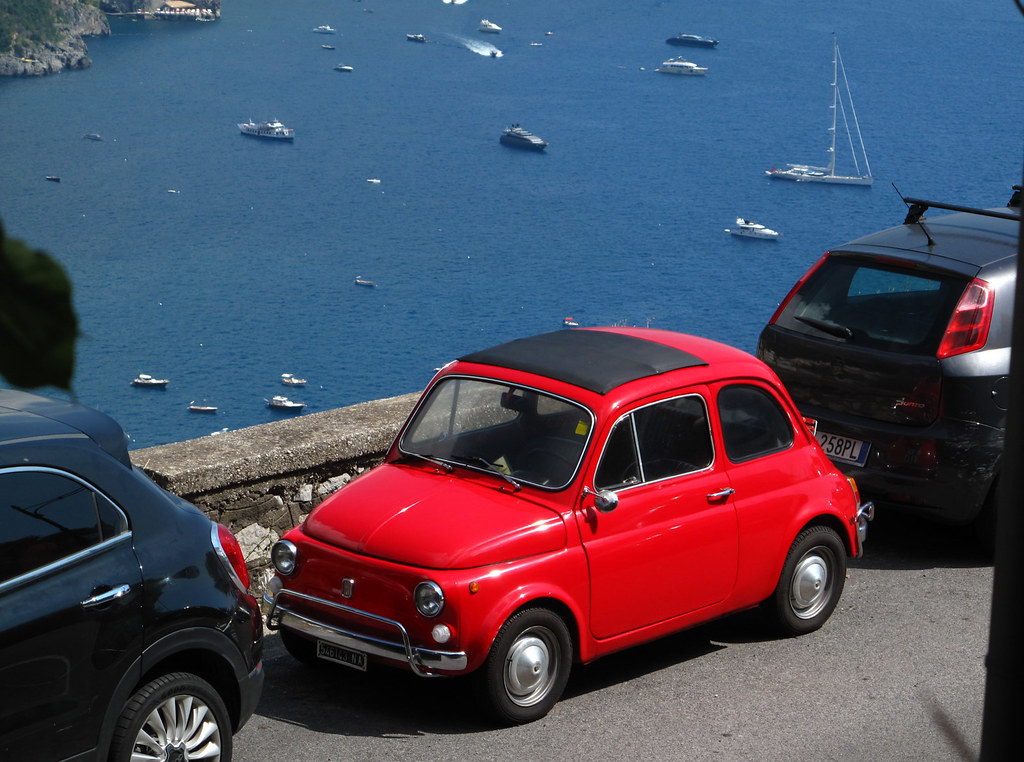
10. Fiat 500
Let’s talk about the Fiat 500, a car that practically screams “personality plus!” It proudly owns its niche, starting with “the classic Fiat 500 girl stereotype.” This driver “love[s] nothing more than watching Love Island, getting your nails done, and going ‘out out’.” It’s a lifestyle driven by fun, fashion, and social media, an embodiment of modern, youthful energy.
The stereotype gets even more specific, noting that you “definitely refer to your boyfriend as ‘this one’ on Instagram.” It paints a picture of someone deeply entrenched in contemporary pop culture, where every moment is a potential photo opportunity. The Fiat 500 isn’t just transportation; it’s a prop in a vibrant, curated life.
Crucially, while some might label this driver as “basic,” the stereotype clarifies, “you don’t care, ‘cos you know you’ve got the prettiest car on the road.” This defiance highlights a self-assured confidence and a strong sense of personal style. The car is chosen not for its performance credentials but for its undeniable charm and aesthetic appeal.
In the broader European context, particularly in Germany, the Fiat 500 is overwhelmingly perceived as “definitely a women’s car.” It’s typically associated with “young women with a rather low salary, worker or simple employee with no university degree.” This suggests an accessible, stylish choice for those who prioritize design and personality over traditional notions of luxury or power.
The Fiat driver is seen as “medium athletic, not at all arrogant, open to the world and rather shy,” adding layers of approachability and genuine character to this charming city car.
Car Model Information: 2012 FIAT 500 Lounge
Name: Fiat 500
Caption: 1970 Fiat 500 L
Aka: Puch 500
Manufacturer: Fiat Automobiles
Production: 1957–1975,3,893,294 units
Assembly: Turin,Desio
Designer: Dante Giacosa
Class: City car
BodyStyle: ubl
Layout: Rear-engine, rear-wheel drive layout
Doors: Suicide door,Car door#Conventional
Related: Autobianchi Bianchina,NSU/Fiat Weinsberg 500,Vignale Gamine,Autobianchi Giardiniera
Engine: Cubic centimetre,499 cc I2,594 cc I2
Transmission: Manual transmission
Wheelbase: {{convert,1840,mm,in,1,abbr=on
Abbr: on
Length: 2970 mm
Width: 1320 mm
Height: 1320 mm
Weight: 499 kg
Predecessor: Fiat 500 “Topolino”
Successor: Fiat 126,Fiat 500 (2007)
Sp: uk
Categories: 1960s cars, 1970s cars, All Wikipedia articles written in British English, All articles with unsourced statements, Articles containing Italian-language text
Summary: The Fiat 500 (Italian: Cinquecento, pronounced [ˌtʃiŋkweˈtʃɛnto]) is an economy / city car that was manufactured and marketed by Fiat Automobiles from 1957 until 1975. It was sold as a two-door semi-convertible or saloon car and as a three-door panel van or estate car.
Launched as the Nuova (new) 500 in July 1957, as a successor to the 500 “Topolino”, it was an inexpensive and practical small car. Measuring 2.97 metres (9 feet 9 inches) long, and originally powered by a rear-mounted 479 cc two-cylinder, air-cooled engine, the 500 was 24.5 centimetres (9.6 inches) smaller than Fiat’s 600, launched two years earlier, and is considered one of the first purpose-designed city cars.
In 1959, Dante Giacosa received a Compasso d’Oro industrial design prize for the Fiat 500. This marked the first time a Compasso d’Oro was awarded to an automotive manufacturer.
Get more information about: Fiat 500
Buying a high-performing used car >>>
Brand: Fiat Model: 500
Price: $5,950 Mileage: 91,698 mi.
Read more about: Beyond the Icons: 13 Overlooked Pony Cars That Command Respect and Deserve a Second Look

11. Range Rover
Ah, the Range Rover! This isn’t just a car; it’s a declaration of a very specific, aspirational lifestyle. According to our insights, “Growing up, your aspiration was to become a Yummy Mummy, and when you achieved that, you bought yourself a Range Rover, because why not?!” It’s the ultimate symbol of having “made it,” especially within a certain social demographic.
The Range Rover driver “enjoy[s] an upper-middle class lifestyle, and you want EVERYONE to know this.” This is evident in the classic school run scenario, where you “love to drop your little darlings off… where you can double park by the gates, before heading off to visit your other Yummy Mummy friends for a spot of lunch, followed by copious amounts of skinny decaf lattes.” It’s about more than just convenience; it’s about visibility and showcasing a certain kind of effortless affluence.
There’s a delightful irony here: while the Range Rover is built for rugged terrains, its owners are often “not the least bit outdoorsy, and they know it.” The context hilariously notes that “the dealership salesman STILL insists on taking you for a test drive on their wannabe rock-crawler obstacle course to show you how impressive it is in an environment you will never enter.” This highlights the gap between the car’s intended use and its actual, often urban, application.
The term “Chelsea tractor” perfectly encapsulates this phenomenon, often used to describe any “large four-wheel-drive vehicle in urban areas.” It’s a playful jab at the perceived incongruity of these formidable machines navigating city streets and suburban school runs. The Range Rover becomes a powerful status symbol, a statement of established wealth and a particular brand of sophisticated, urban parenthood, proving that sometimes, appearances truly are everything.
Car Model Information: 2023 Genesis GV80 2.5T
Name: Range Rover (L460)
Manufacturer: Jaguar Land Rover
ModelCode: L460
Designer: Gerry McGovern
Production: 2022–present
Assembly: Solihull
Class: Full-size SUV
BodyStyle: Sport utility vehicle
Layout: Front-engine, four-wheel-drive layout
Platform: Jaguar Land Rover car platforms#MLA-Flex
Related: Range Rover Sport#L461
Engine: Petrol engine,Straight-six engine,twin-turbo,Diesel engine,3.0 L twin-turbo I6,3.0 L twin-turbo I6 MHEV,Petrol engine,3.0 L turbo I6 PHEV
Motor: ubl
Abbr: on
Drivetrain: class=nowrap,Mild hybrid,Plug-in hybrid,P510e/P550e)
Transmission: ZF 8HP transmission
Battery: Kilowatt-hour,Lithium-ion battery
Wheelbase: class=nowrap,{{convert,2997,mm,in,1,abbr=on
Length: class=nowrap,{{convert,5052,mm,in,1,abbr=on
Width: class=nowrap,{{convert,2047,mm,in,1,abbr=on
Height: 1870 mm
Weight: [object Object]
Sp: uk
Predecessor: ubl
Categories: All-wheel-drive vehicles, All Wikipedia articles written in British English, All articles containing potentially dated statements, All articles with unsourced statements, Articles containing potentially dated statements from 2023
Summary: The Land Rover Range Rover (L460), generally shortened to Range Rover, is the fifth generation of the Range Rover, a range of mid- and full-size luxury crossovers produced by Land Rover. It was revealed in London on 26 October 2021. The car is available in two different wheelbases, and the vehicle is available in guises consisting of petrol, petrol mild hybrid, petrol plug-in hybrid, and diesel mild hybrid. A seven-seater option was available slightly after launch.
Get more information about: Range Rover (L460)
Buying a high-performing used car >>>
Brand: Range Rover Model: Range Rover
Price: $38,452 Mileage: 37,710 mi.
Read more about: Unbelievably Vanished? A Deep Dive into 14 Iconic Daytime Talk Show & News Anchors Who Left the Airwaves

12. Subaru
For many, the Subaru evokes images of nature, dogs, and a certain earnest, often politically aware, sensibility. The stereotype is wonderfully vivid: “Crunchy granola lesbians or flannel-wearing throwbacks.” It’s a brand deeply intertwined with an outdoor-loving, environmentally conscious identity, almost a uniform for those embracing a particular lifestyle.
You can often spot a Subaru Outback adorned with “a dog in the back, a kayak on top, and a bumper sticker preaching ‘Coexist’ while they cut you off.” This blend of admirable ideals and slightly aggressive road behavior creates a memorable, if sometimes contradictory, image. It’s the classic “do-gooder” who might still be a little impatient behind the wheel.
Interestingly, other Subaru owners, particularly those with a WRX, have a different, albeit equally specific, stereotype: they “all vape.” The advice is to “At the very least, keep the windows rolled up so it doesn’t look like your wannabe rally car is overheating.” It paints a picture of a youthful, performance-oriented driver who might be trying a bit too hard to look cool.
There’s also a playful jab at the cleanliness (or lack thereof) of some Subaru Foresters, with owners “car[ing] more about the environment than their own cars.” The suggestion to “just wash the car once a year” because “The bird poop covered roof and tree-sap on the hood isn’t appealing” adds a humorous, relatable touch. These stereotypes, whether crunchy-granola or rally-wannabe, paint Subaru owners as passionate individuals whose cars are extensions of their deeply held beliefs and chosen paths in life.
Read more about: Beyond the Badges: 14 Low-Key Trucks That Quietly Outperformed Expectations
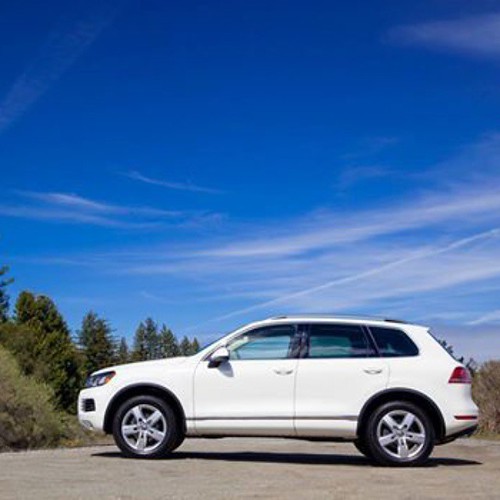
13. Volkswagen
Now, let’s turn our attention to Volkswagen, a brand that has managed to embed itself firmly into the fabric of everyday life, earning itself a rather “diffuse” but distinctly relatable image. The VW driver often “embodies the middle class which is moderately educated, has average income, not quite young but also not old yet.” It’s the car for the everyperson, a reliable workhorse without pretense.
This driver is typically seen as balanced, neither “particularly sporty nor completely lazy.” They strike a comfortable middle ground, perceived as “decent and cosmopolitan – shy and audacious.” It’s a brand that offers a sense of humility and practical wisdom, appealing to those who value understated quality and widespread appeal.
However, the Volkswagen brand also encompasses some truly iconic models with their own distinct, and often humorous, stereotypes. Take the classic Beetle, for instance: its drivers are often caricatured as “Granola chicks with hairy armpits and dudes named Sunday.” Their “Beetle’s got BLM stickers and smells like patchouli and stale weed,” reflecting a free-spirited, counter-culture identity.
Then there are the “MK4 Volkswagen Jetta owners,” who are nostalgically remembered as “the ‘hot girl’ in high school.” The context even adds a playful jab: “Admit it, your senior crush drove one of these. It’s too bad they all smell like melted crayons inside.” These specific examples highlight how even within a broadly middle-class brand, individual models can carry their own rich tapestry of associations, deeply tied to past trends and enduring pop culture references.
This range of perceptions, from wholesome middle-class to specific counter-culture vibes, makes the Volkswagen driver stereotype particularly multifaceted. It demonstrates how a brand can represent a wide spectrum of identities, even within its established image.
And there you have it, folks! We’ve zoomed through 13 of the most talked-about car-driver stereotypes, from the high-flying Audis to the humble, yet iconic, Volkswagens. What’s undeniably clear is that our cars are more than just metal, glass, and rubber; they’re canvases onto which society projects a myriad of assumptions about who we are, what we value, and how we navigate the world. These perceptions, while often lighthearted and fodder for a good laugh, can unfortunately take a darker, more problematic turn.
It’s crucial to acknowledge that while many of these stereotypes are tossed around playfully, there’s a serious undercurrent. Our research shows that “racial bias, prejudice and discrimination very much still exists,” and “one space where racism is routinely present on the road” is through car-driver assumptions. Imagine being “young and of South Asian heritage and you drive an expensive looking car in an inner city,” only to “run the risk of being stereotyped as a drug dealer.” It’s a stark reminder of how deeply ingrained prejudices can be, leading to unfair judgments based solely on appearance and vehicle choice.
Similarly, even “car customisation and modification,” which is often a creative and artistic endeavor, can lead to owners being “made to feel they are problematic troublemakers – and doubly problematic if they are not white.” This highlights how race and class-based prejudices are “given licence to be enacted on the road with such frequency that they become rational, banal, accepted.” It’s a disturbing reality where what you drive, and who you are, can lead to unjust scrutiny.
The real-world implications are profoundly unsettling. Just look at the widely reported incidents involving Labour MP Dawn Butler and GB sprinter Bianca Williams, both of whom accused the Metropolitan Police of racial profiling after being stopped in their vehicles. These aren’t isolated events; they underscore how a “prestige car with tinted windows and black occupants in a largely white and affluent district may have been something of a flag – hence the stop.” These experiences, where individuals are suspected of criminality “partly because of the false assumption that the car they drive seems only attainable through illicit means,” have lasting and damaging effects.
Read more about: The Curated Canvas: Inside Ralph Lauren’s Exclusive Garage of Vintage Race Cars and Modern Exotic Hypercars
So, the next time you find yourself making a snap judgment about a driver based on their car, take a moment to reflect. While some stereotypes offer a chuckle, others perpetuate harmful biases. What’s truly needed is “a shift in cultural attitudes” and a conscious effort to challenge these “racially primed shortcuts for what they are.” Let’s hope that policing strategies, especially in multi-ethnic areas, can be modified to ensure practices aren’t simply a result of ingrained prejudice. Because ultimately, the road should be a place where everyone can drive freely, without the weight of unfair assumptions.

